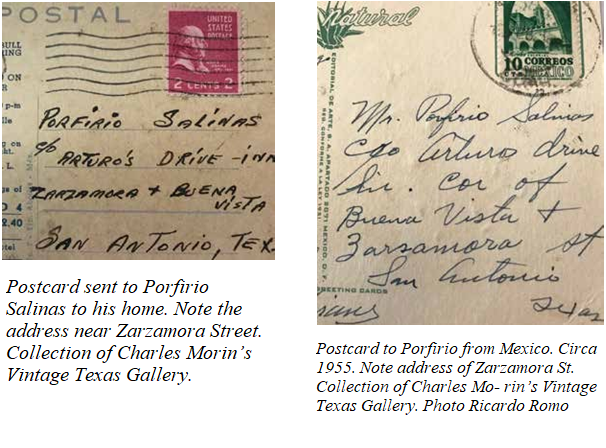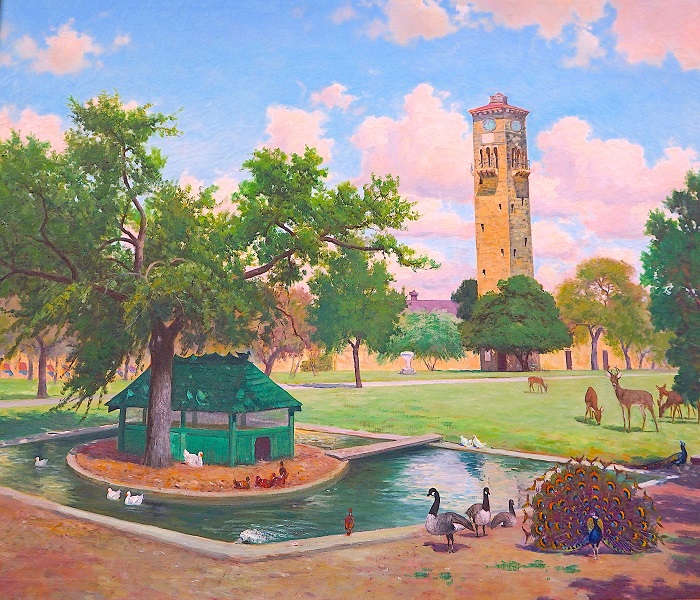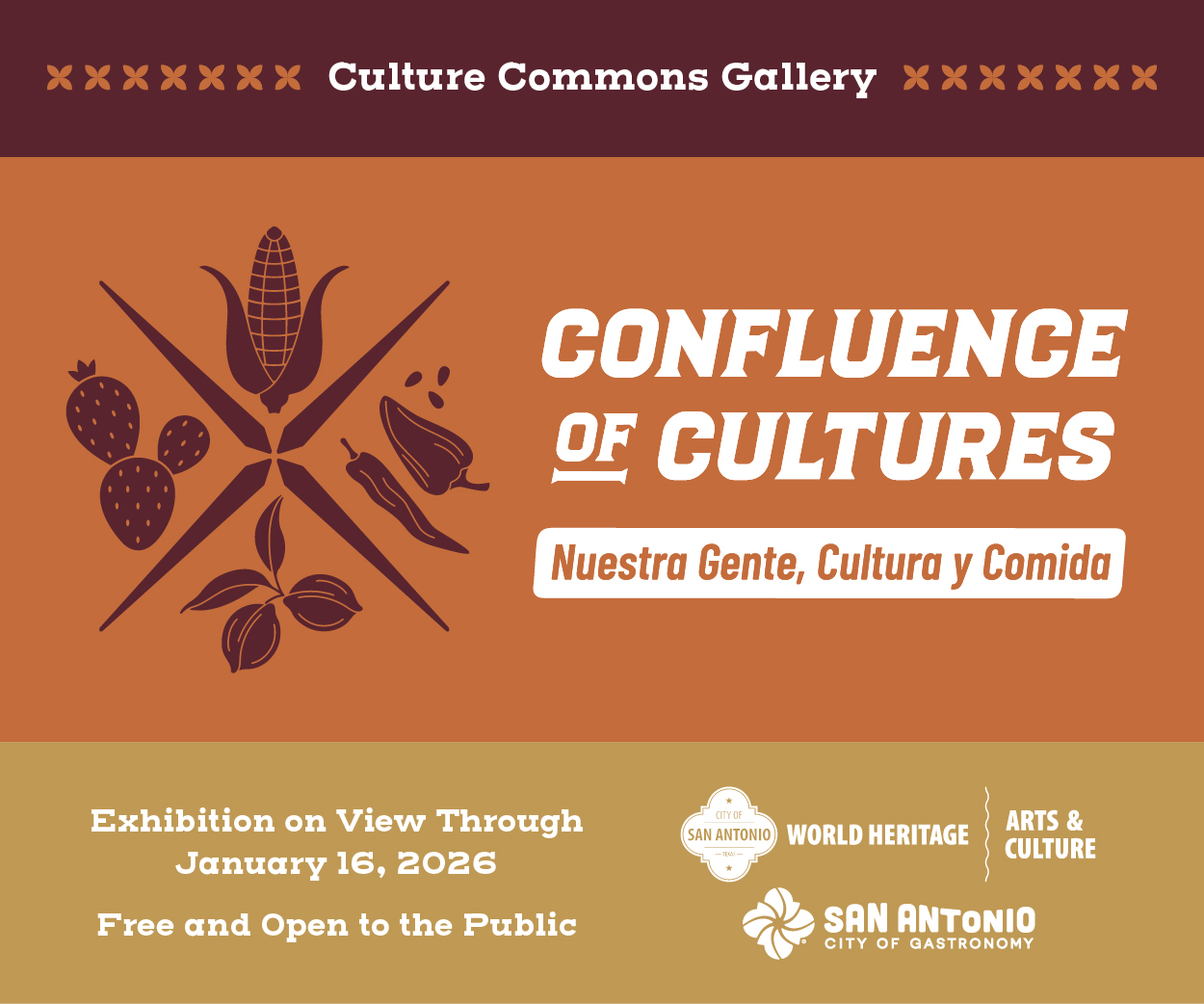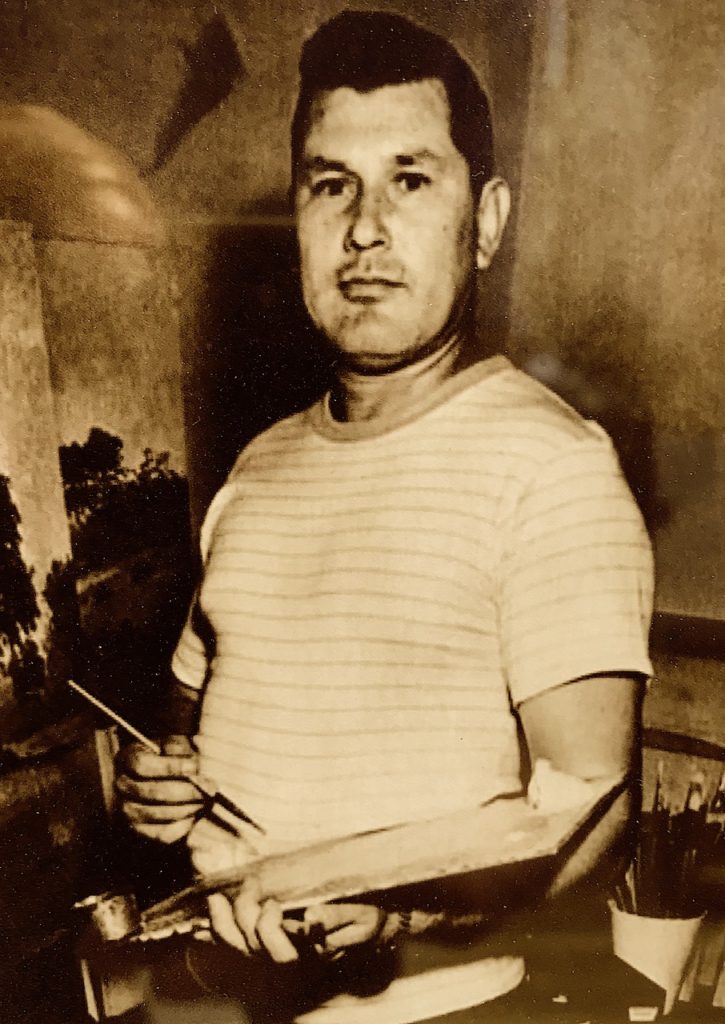 The famed bluebonnet painter Porfirio Salinas is undoubtedly one of the most famous personalities who lived in the Zarzamora Corridor of the Westside during the 1960s. Born in Bastrop, Texas in 1910, Salinas moved to San Antonio as a child. As an adult he resided on Buena Vista Street near the old Malt House.
The famed bluebonnet painter Porfirio Salinas is undoubtedly one of the most famous personalities who lived in the Zarzamora Corridor of the Westside during the 1960s. Born in Bastrop, Texas in 1910, Salinas moved to San Antonio as a child. As an adult he resided on Buena Vista Street near the old Malt House.
Salinas grew up in an era when Texas did poorly in educating Hispanics. In many parts of South Texas Mexican Americans were required to attend segregated “Mexican schools.” Although Salinas’ education may have been limited to elementary school, he enjoyed drawing and painting from a young age. At age ten, he sold his first paintings to one of his teachers.
At age fifteen, while Salinas was employed at an art supply store near the San Antonio Riverwalk, he met the English-born painter, Robert W. Wood. Wood had a studio in the downtown area and hired Salinas to stretch canvases and frame paintings. Wood was taking art classes from famed Spanish-born artist José Arpa, and likely introduced Salinas to him and other artists with similar interests. Salinas worked as an apprentice to Wood and Arpa. He accompanied the two artists as they
painted plein-air ( the open air) in the Texas hill country. According to one newspaper account, Wood had grown tired of painting the small tedious bluebonnets and hired Salinas to add bluebonnets to his paintings, paying him five dollars per painting.
Salinas learned enough from these two artists to open his own art shop in 1930. During the Great Depression he sold mostly to local residents and tourists visiting the Alamo. Before 1940, he was not well-known outside of San Antonio, as he participated in few shows or exhibitions. However, in 1939, Salinas began a lifelong business relationship with Dewey Bradford, an art supply store owner in Austin who also sold the works of Texas artists. Perhaps with Bradford’s encouragement, Salinas was selected the following year for an exhibit titled: “Paintings by Texas Artists” at the J.W. Young Galleries in Chicago. His works during this time had a special quality. Jeffrey Morseburg wrote that “While some of his early works have a soft, tonalist quality, with subtle gradations of sunset colors, most were painted in a style that fits well within the currents of the late American Impressionist style, with solid drawing and a warm, chromatic palette.”
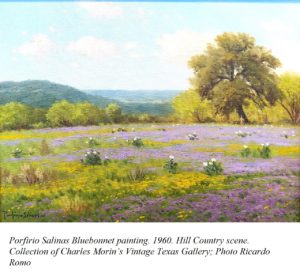 In 1943, the U.S. Army drafted Salinas, but given his age and artistic talent, he was allowed to remain in San Antonio where he worked by day painting murals on the walls of numerous mess halls and other temporary buildings at Fort Sam Houston. According to articles and books on Salinas, his art at the San Antonio military base was thought to have been destroyed when the buildings were demolished. However, in conducting research on Salinas at the McNay Museum Library, I found an old file that included a photo of a painting titled “The Alamo” that had been placed in the Fort Sam Houston Commander’s office. The “Alamo” painting was indeed preserved and can be viewed in the Fort Sam Houston Museum.
In 1943, the U.S. Army drafted Salinas, but given his age and artistic talent, he was allowed to remain in San Antonio where he worked by day painting murals on the walls of numerous mess halls and other temporary buildings at Fort Sam Houston. According to articles and books on Salinas, his art at the San Antonio military base was thought to have been destroyed when the buildings were demolished. However, in conducting research on Salinas at the McNay Museum Library, I found an old file that included a photo of a painting titled “The Alamo” that had been placed in the Fort Sam Houston Commander’s office. The “Alamo” painting was indeed preserved and can be viewed in the Fort Sam Houston Museum.
After the war, Salinas returned to studio and plein-air painting. The post-war years were also the beginning of his most successful years as a painter. There is some debate as to what famous Texans bought his first painting. Soon after World War II, Dewey Bradford is said to have sold a Salinas painting to Speaker of the U.S. House of Representatives, Sam Rayburn. Rayburn hung his Salinas paintings at his home and in his office in Washington DC where they were admired by Lady Bird Johnson. She and her husband, then Congressman Lyndon B. Johnson, purchased several, as did the famed
writer, J. Frank Dobie. When LBJ became a U.S. Senator, he purchased additional Salinas paintings for his office.
Other than art dealer Bradford, no one did more to enhance Salinas’ art career than Lyndon B. Johnson and his wife Lady Bird Johnson. The Johnsons had collected Salinas’ work since the late 1940s. When Vice President Johnson succeeded President John F. Kennedy, he hung numerous Salinas paintings in his White House office, as well as at his home and Junction, Texas ranch office. In an article titled “L.B.J.’s Favorite Painter,” a New York Times reporter wrote that a “Salinas canvas is a chunk of Texas instantly recognized by anyone who has plodded across the sparse countryside of yucca and huisache.” The report added that “for 30 years [Salinas’s] work has been marked by faithful color, elaborate detail and a keen eye for the vastness of the Texas plains.”
The sixties were very productive years for Salinas. It is estimated by art gallery owner Charles Morin that Salinas painted several thousand landscapes in that decade alone. The sixties also represented a time when young Mexican Americans from Salinas’ San Antonio Westside neighborhood were coming of age as artists. Less than two blocks away lived Jesse Trevino, one of the outstanding artists of his generation.
Jesse Trevino may have been aware that paintings by Salinas were acquired by prominent Texas “movers and shakers,” however, Trevino was finding his own artistic style. Early in his career, Trevino expressed a great appreciation for the realistic portrayals of everyday life by Norman Rockwell. Salinas’ landscapes, farmhouses and rural scenes appealed to rural Texans, and his art focused principally on Western Americana that romanticized the past. None of this subject matter interested Trevino as an artist. Nonetheless Trevino and Salinas did have an LBJ connection. As a 10th grade student at Fox Tech High School in 1961 Trevino painted a portrait of LBJ, Salinas’ major patron. That painting was recently donated to the LBJ Library by Dr. Alfonso “Chico” Chiscano.
 A new generation of artists were emerging in San Antonio’s Westside. Whereas Salinas had been inspired by Julian and Robert Onderdonk, Robert Wood, and Jose Apra–all known for their Texas landscapes, the artistic perspectives of the new generation of Mexican American artists was shaped more by their urban upbringing and bilingual cultural environment. Moreover, many of the San Antonio and South Texas artists looked South to the Mexican masters of an earlier era which included Diego
A new generation of artists were emerging in San Antonio’s Westside. Whereas Salinas had been inspired by Julian and Robert Onderdonk, Robert Wood, and Jose Apra–all known for their Texas landscapes, the artistic perspectives of the new generation of Mexican American artists was shaped more by their urban upbringing and bilingual cultural environment. Moreover, many of the San Antonio and South Texas artists looked South to the Mexican masters of an earlier era which included Diego
Rivera, José Clemente Orozco, David Siquerios, and Rufino Tamayo. These Mexican artists incorporated pre-Columbian motifs, Mexican Revolution icons, and images of campesinos and workers.
When Salinas died on April 20, 1973, The New Times commented on President Johnson’s appreciation for his work, adding that Lady Bird Johnson had at one time commissioned Salinas to paint some of her husband’s favorite scenes along the Pedernales River. The Times reported that “The artist’s work has been described as a type of heightened realism, picturing brimming creeks, brilliant patches of winter oaks, gnarled oaks, wildflowers and bluebonnets thrusting purplish-blue heads toward the sun.” As an artist, Salinas put San Antonio on the cultural map. Many artists followed his path, and western and Texas landscape paintings remain popular today. But during Salinas’ golden years, he also witnessed the emergence of a new Texas art, one that focused on the Mexican American experience. By the time of Salinas’ death in 1973, a new generation of Mexican American artists had begun creating work that placed a new emphasis on identity and culture.
For additional information on Porfirio Salinas and other Mexican American artists, see my essay “Hispanic Art in Texas,” in Ron Tyler’s edited book The Art of Texas: 250 Years published by TCU Press with the Witte Museum 2019.
